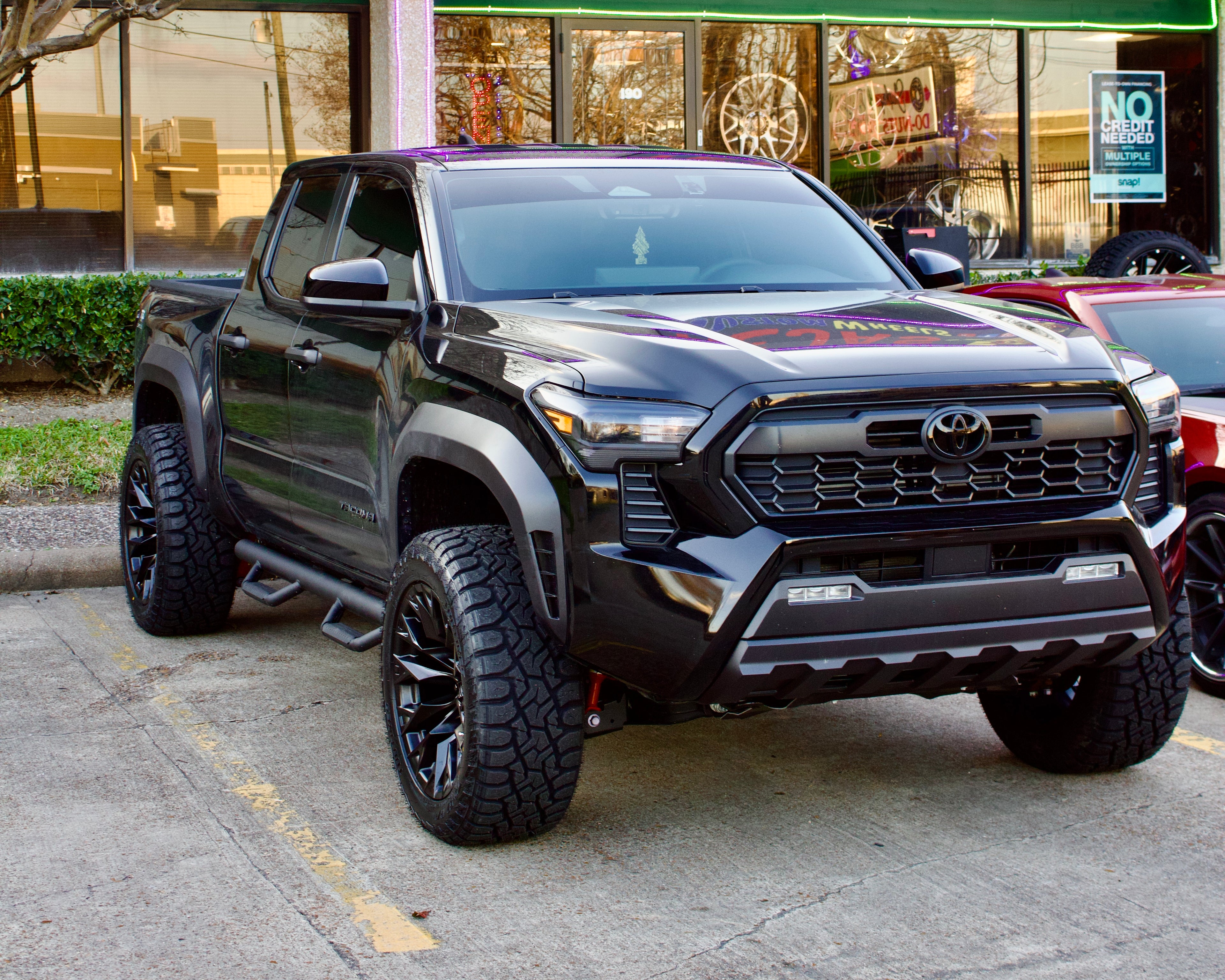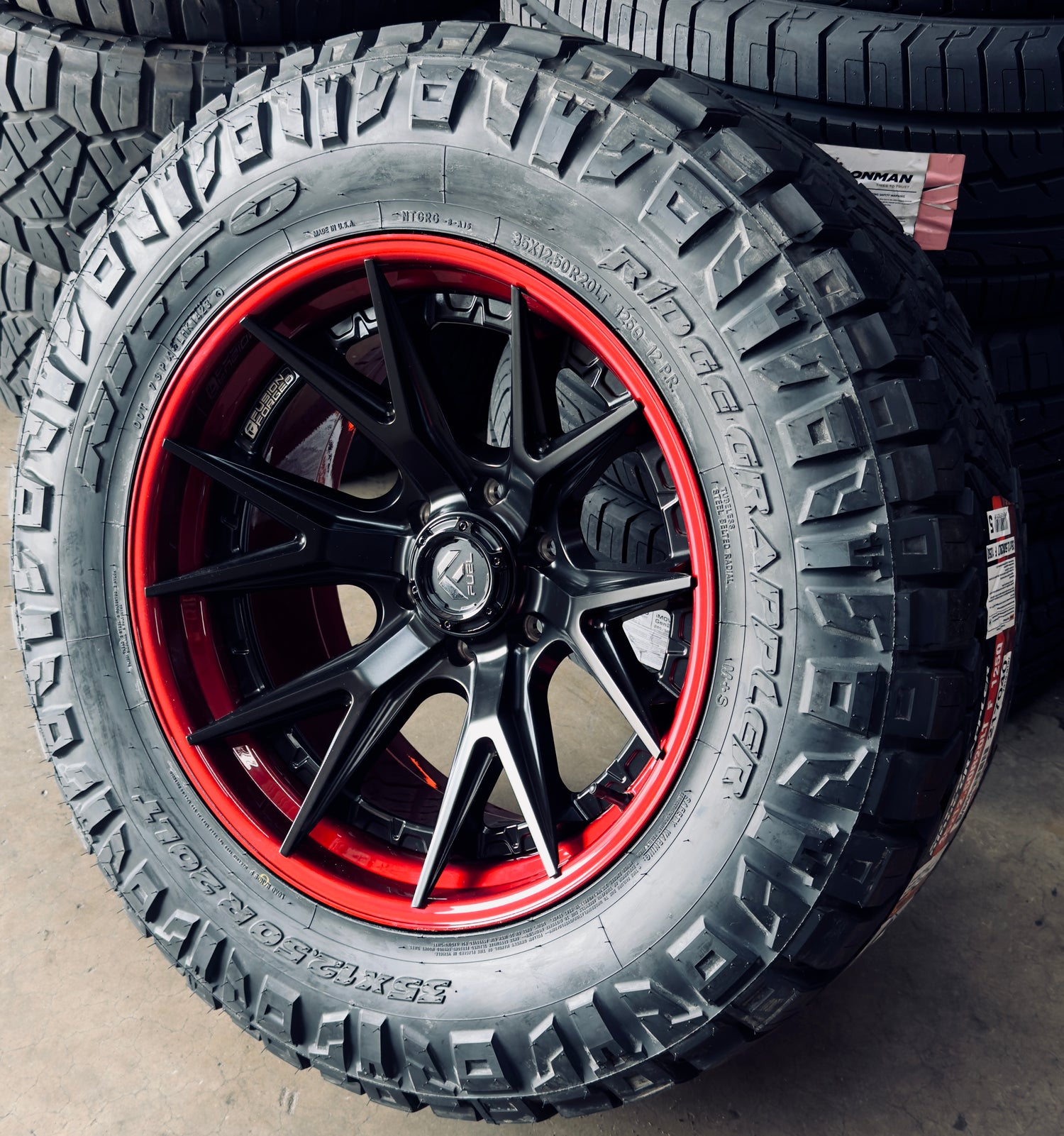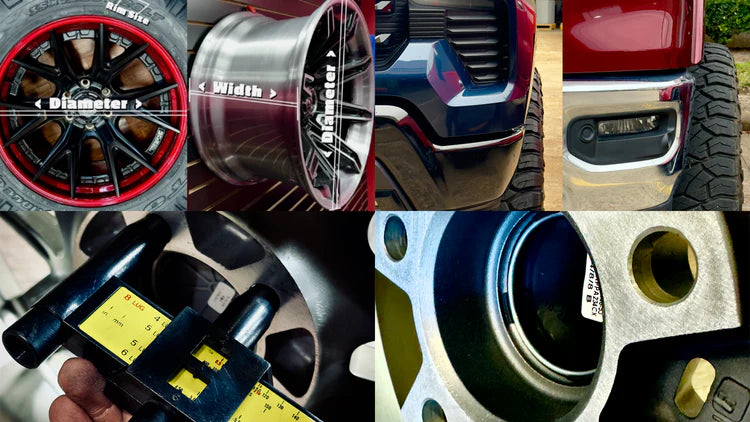
BUILT FOR YOU, BUILT RIGHT
With more than 15 years of experience, our goal is that each of our clients have a unique experience when doing business with us

About Us
At Tejas Custom Wheels, we believe your vehicle is more than just transportation — it’s an extension of who you are. That’s why we’re passionate about helping drivers across Houston and beyond roll with confidence, individuality, and pride.
With years of experience in wheels, tires, and suspension upgrades, our team is dedicated to bringing you the best in style, performance, and reliability. Whether you’re looking to enhance your daily driver, elevate your truck for off-road adventures, or add a bold statement to your show car, we’ve got the perfect setup to match your vision.
What sets us apart is our commitment to you. We take the time to understand your goals, guide you through the options, and deliver a finished product that not only turns heads but also feels tailored to your personality. From sleek street designs to rugged off-road builds, we make sure every detail gives you that unmatched sense of pride every time you hit the road.
At Tejas Custom Wheels, we don’t just sell wheels and tires — we deliver an experience that leaves you confident in your investment and proud of your ride.

What We Offer
From custom wheels and tires to lift kits, leveling kits, drop kits, powder coating, and wheel repair, we offer a full range of services to help you personalize your ride. Our state-of-the-art facility and experienced technicians ensure that each modification is executed with precision and quality. Plus, with flexible financing options, upgrading your vehicle has never been easier.
What to keep in mind when buying wheels and tires

How to measure rim diameter and width
1. Measure the Rim Diameter. Use a tape measure or ruler to measure the diameter of the rim (not the tire) from one edge to the other. This is the size of the rim (in inches) Lay the wheel flat on the ground. Measure straight across the center of the rim from one side to the other. This gives you the diameter of the rim (e.g., 18 inches, 20 inches, etc.).
2. Measure the Rim Width. The width is measured from one inner edge of the rim to the other, where the tire sits. Use a caliper or measuring tape to measure across the inside part of the rim. You are measuring the distance between the two inner edges of the rim. This is typically between 7-12 inches, depending on the rim.
3. Check for Markings on the Rim. Many rims have the size imprinted on the back or side of the wheel. Look for a code like 16x7 (diameter x width) or 17x8.5. If the measurements aren't visible, proceed with measuring the rim manually.
4. Use a Tire Size. If there's a tire mounted on the rim, you can extract some of the rim's measurements from the tire size. Look at the sidewall of the tire, where you'll find a number like 275/55R20. The "20" in this example refers to the rim diameter in inches.
What's wheel offset
Wheel offset refers to the distance from the centerline of the wheel to the mounting surface of the wheel that attaches to the hub.
It is measured in millimeters and significantly affects how a wheel fits on a vehicle.
Positive Offset: The mounting surface is located toward the front (or road side) of the wheel centerline. Most factory wheels have a positive offset, which keeps the wheels tucked under the car.
Negative Offset: The mounting surface is located towards the back (or brake side) of the wheel centerline. A negative offset pushes the wheel further out from the car, often used to create a deep-dish look.
Zero Offset: The mounting surface is exactly at the centerline of the wheel. As the name suggests, it places the wheel's mounting surface directly in the center. Where to find the offset of a wheel: To read the wheel offset, you typically look for a small marking stamped or engraved on the back of the wheel or inside the wheel rim. It is often a number, such as ET35 or +35, which represents offset in millimeters. A positive number indicates a positive offset, while a negative number indicates a negative offset. When selecting wheels, ensure the offset is suitable for your vehicle. The offset will determine how much the wheel is going to stick out.
What's bolt pattern
Bolt pattern is the arrangement of the holes where the wheel bolts onto the hub of a vehicle. It’s usually described by two numbers:
1. The number of bolts (studs) for example, 4, 5, or 6 bolt holes.
2. The diameter of the circle formed by the center of each bolt hole measured in millimeters, like 100mm or 114.3mm. For example, a bolt pattern of 5x114.3 means the wheel has 5 bolt holes and the diameter of the circle that the holes form is 114.3mm. To find the correct bolt pattern for your vehicle:
1. Check the owner’s manual: It will usually list the exact specifications for the wheel.
2. Measure it yourself: For a 5-bolt pattern: Measure from the center of one bolt hole to the center of the bolt hole directly across (not the adjacent one). For a 4-bolt or more:
Measure from the center of one hole to the center of the opposite hole Alternatively, a simple online search with your vehicle’s make, model, and year should give you the correct bolt pattern. If you’re buying wheels, it’s crucial to get the right bolt pattern to ensure the wheels fit properly.
What does centerbore/hub bore mean
What’s the centerbore or hub bore mean The centerbore, also known as the hub bore, refers to the large hole in the center of a wheel that fits over the mounting hub of a vehicle. It is an important dimension because it ensures the wheel is properly centered on the hub. A correct fit between the centerbore of the wheel and the vehicle's hub helps prevent vibration while driving, as it ensures the wheel is balanced and properly aligned with the vehicle's axle. In many hub-centric wheels, the centerbore is specifically sized to fit snugly on the hub, which is important for wheel stability and safety. Most of our wheels have a centerbore of 106.2mm or 108mm centerbore meaning it fits all type of truck but we give free hub rings to ensure your vehicle gets the best ride quality.

